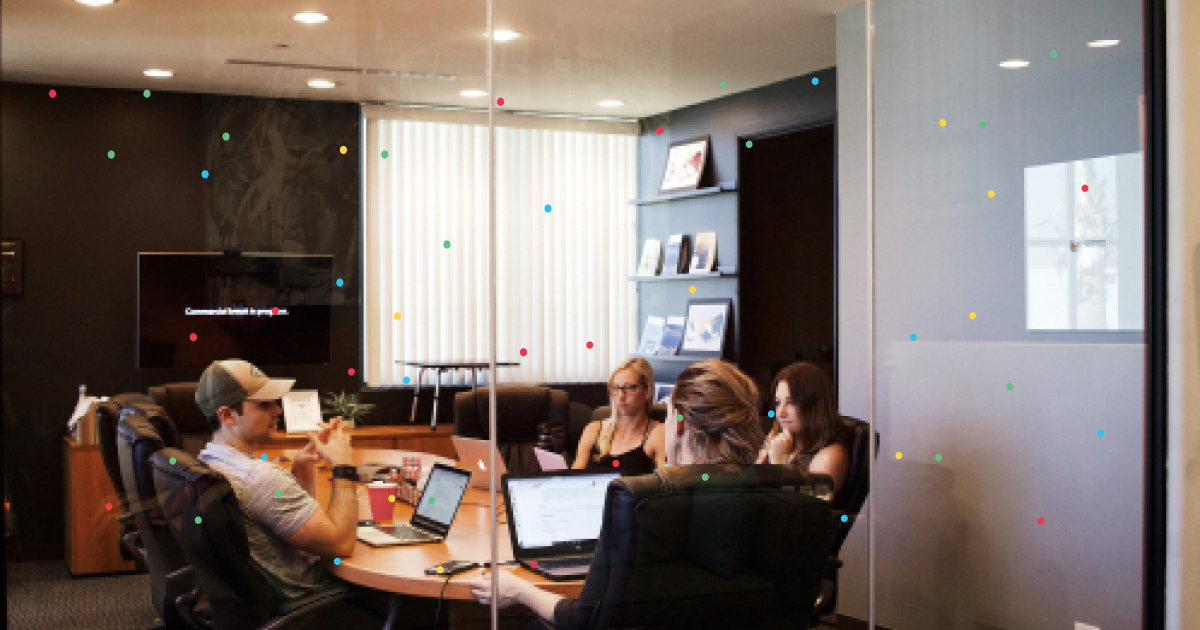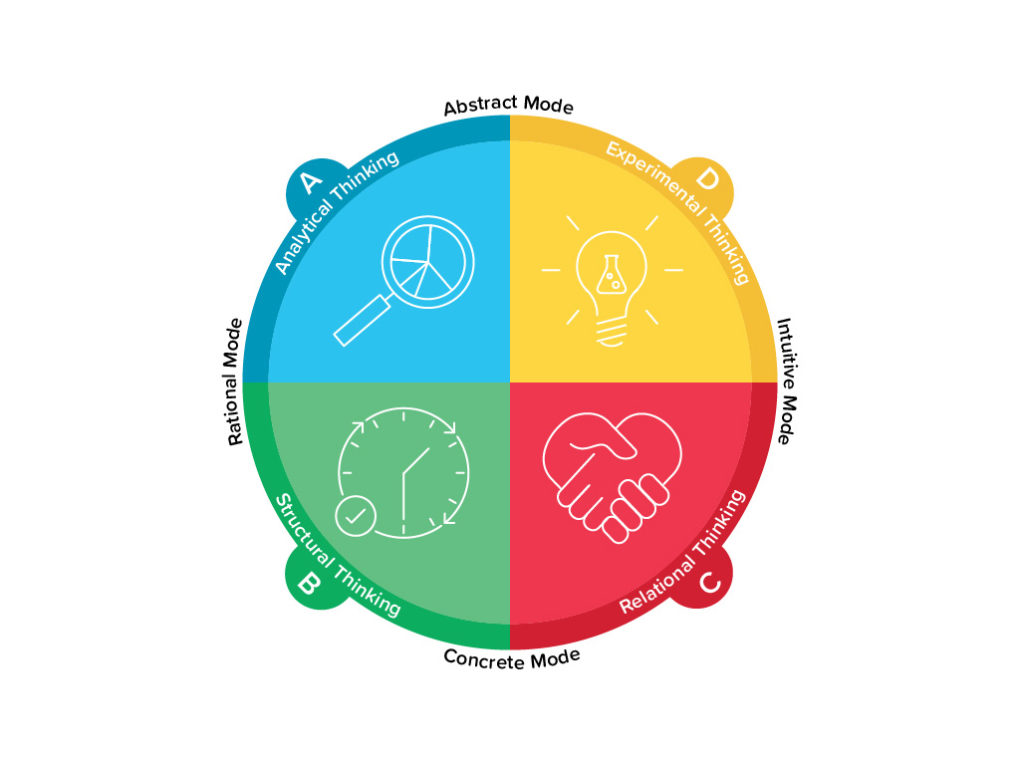As tough as the past 12 months have been for many of us across the globe, we can take some solace in the fact that there will be better days ahead.
2020 will long remind us of devastating job losses and business closures. Moving forward, it should be no surprise that people will continue to be concerned about their health, financial security and just how quickly the world can seemingly turn upside down.
But even if we can’t be certain of what tomorrow, next week, next year or a decade’s time may bring, we can always give ourselves a greater opportunity to thrive with some preparation, investment in our development and by seeing the world through the lenses of others.
Seeing the world through the lens of Whole Brain® Thinking
At Herrmann, we know that in order to thrive in a changing world, we can use the lens of Whole Brain® Thinking to flex our thinking and see things from perspectives we perhaps wouldn’t have otherwise.
The HBDI® is based on the Whole Brain® Model, a metaphor for how people tend to use their brains and how their thinking works. The HBDI® asks questions that are related to both home and work situations and seeks to represent your total self.
In the Whole Brain® Model, thinking falls into four preferences of equal importance that everyone can access:
- The Upper Left Blue A Quadrant specialises in logical, analytical, quantitative, fact-based thinking.
- The Lower Left Green B Quadrant focuses on details and specialises in planning, organising, and sequencing information.
- The Lower Right Red C Quadrant places a priority on feelings and the interpersonal, emotional and kinesthetic aspects of a situation.
- The Upper Right Yellow D Quadrant synthesises and integrates information and is more intuitive and holistic in its thinking.
The four-colour quadrant graphic and Whole Brain® are registered trademarks of Herrmann Global, LLC. ©2015 Herrmann Global, LLC
What is most important is making sure that your approach is working for you in the given situation and, if not, shifting your thinking to get the results you desire, both at home and at work.
Whether it be finding a new job, excelling in your current role or earning a promotion, by understanding our thinking preferences and those of others, we may be able to progress more quickly towards desired outcomes.
What skills can you attain by practicing Whole Brain® Thinking
Teams with members that represent different quadrants of the HBDI® often outperform those that don’t – they also often deliver more innovative and creative solutions.
To thrive in the next normal, you may consider who you work with, and work with those who perhaps you may not have initially gravitated towards. Generally speaking, we’re more likely to (on first instinct) want to collaborate with those who think similarly to us.
But, while this can be advantageous in some settings or situations, to really grow your own skill set and further your professional development we need to get out of our comfort zone.
The four preferences that everyone has access to all pertain to certain strengths when it comes to work. We can all perform in different roles, even if the role is not a perfect fit with our preferences. Being aware of when we are mentally stretching can help us understand why certain tasks make us feel more fatigued or drained – and it also may help us to know where to get help from for particular tasks.
The Analytical Mindset
People who prefer the analytical mindset are often great at critical analysis. They gather facts, use precise measurements and argue rationally. They’re often very goal-oriented, and may be perceived by others as unemotional. These individuals are great on projects where research is required, and when bringing analysis to different ideas and concepts is important.
The Practical Mindset
The practical mindset often believes there’s a rule and place for everything. They’re disciplined, very reliable and are great with detailed plans and procedures. Often described by others as ‘set in their ways’, they value stability. These individuals are great with routine and detail-focussed work.
The Relational Mindset
People who preference the relational mindset are often very team-oriented. They care about values, are empathetic and are great at helping, coaching and partnering. They’re often more attuned than their peers to people and group dynamics. Great at brainstorming and free-flowing activities, their strength is bringing the team together.
The Experimental Mindset
The experimental mindset sees the big picture. They’re great at integrating ideas and concepts, challenging established policies and being impulsive and artistic. They value variety, and often enjoy multitasking. Great at intuitive problem solving, they often excel at developing innovative and creative solutions.
What could I do to develop greater comfort in a quadrant?
Adopting an agile and resilient mindset is easier said than done. But, as with all things in life, growth comes with practice. You can find ways to practice shifting to another quadrant while you’re engaged in a challenging activity at work, or at home. By ‘stepping into’ the thinking style of one of your less-dominant quadrants, you can feel a ‘mental stretch’.
It’s best to engage in the activity at the time of day where you have the most energy, even though in most cases people do the opposite – we often leave the most challenging tasks for when we have the least energy! You need that extra mental energy to both get that mental stretch and retain the learnings you may encounter when you do it.
Examples of how you can get a ‘mental stretch’:
- If you struggle with spreadsheets and handling data, and you have a low preference in the A quadrant, you might choose to practice calculations, new formulas and take more initiative in this area.
- If you love social events at work, and you are low in the B quadrant, you might decide to engage in planning and coordinating an event so that you have to take care of all the details and decisions.
- If you love golf, but have a low preference in the C quadrant, you might use the social aspects of golfing to pay more attention to getting to know your playing partners on the course.
- If you love collecting and are low in the D quadrant preference, you might find new ways of collecting or creatively displaying the collections.
By understanding your own preferences, you also have an ability to understand others and how you could better influence, sell to and lead teams – the possibilities really are endless.
Where there’s change, there are new possibilities
It’s common practice to try to increase efficiency by adding people to a task. That’s appropriate when the task requires more muscle; but in many cases the task needs more mind!
You can thrive in the next normal by not only understanding how to get the best from your own thinking, but from understanding how others think and how to engage the right people – we’re at our best when we know where to get support.
If you’ve completed the HBDI®, your profile will help you be more effective in how you use your thinking to accomplish what you want to accomplish. As we begin 2021, let’s take the time to reset, refresh and bring newfound optimism to thrive now, and in the years to come!
Interested in learning more about Whole Brain® Thinking and how it can help you reach your full potential? Get in touch with Herrmann.


